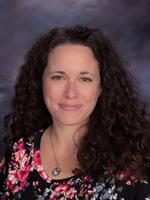But what if, instead of bemoaning the challenges of their chosen occupation, teachers consciously chose in their classrooms to talk about the autonomy they enjoy, the creativity involved in their jobs, and the meaningful difference they make? What if, as an experiment for a year, teachers wove messages into their lesson plans about the joys and rewards of working in education?
“Maybe it’s possible to flip the script, and counter negative talk about teaching with a groundswell of affirmative talk,” thought Canyons District recruiter Jo Jolley who set about doing just that through an ambassadorial program she created in partnership with the University of Utah’s Urban Institute for Teacher Education (UITE).
Here’s how it worked: Seven CSD teachers signed up to be ambassadors for which they received a small stipend from the U. Each was tasked with developing and testing strategies for elevating their profession, the end goal being to help build a healthy pipeline of future educators. The ambassadors were given free-license to come up with a campaign, program or messaging strategy that they felt would work best at their school, and their creativity was inspiring, says UITE Director Mary D. Burbank, Assistant Dean of the U.’s College of Education.
“Over the years, we’ve worked with area schools on dozens of programs to promote teaching and improve recruitment, but this is the first time we have asked teachers who are in the field to be ambassadors for their profession,” Burbank says. “Teachers are influential role models, and we know that daily exposure to positive role models factors heavily into people’s career choices. These ambassadors are exemplary educators who shine a positive light on their profession in ways that will perhaps change the perception of teaching and pique the interest of young people.”
{source}
<iframe width=”560″ height=”315″ src=”https://www.youtube.com/embed/bzo-4JgDFf8″ frameborder=”0″ allow=”accelerometer; autoplay; encrypted-media; gyroscope; picture-in-picture” allowfullscreen></iframe>
{/source}
Some of CSD’s ambassadors sponsored “Why I Teach” panel discussions. Others launched full-blown, college-level “Teaching 101” courses in CSD’s high schools. One such course at Hillcrest High, developed jointly with the U., attracted a large number of underrepresented minorities, a high-demand demographic for teacher-training programs looking to build a diverse, sustainable and high-quality teaching workforce.
But most of the ambassadors experimented with micro-messaging, those subtleor not so subtlemessages that we convey about our values and expectations. Micro-messages can be found in a person’s tone of voice, a facial expression, or the utterance of a common phrase. They betray our beliefs and biases in ways we may not even be aware, but can also be used in constructive ways to drive cultural change.
 “We don’t have enough young people going into this profession, which probably has something to do with the way we portray our job on social media and in conversations,” said Denise Sidesinger, a science teacher at Albion Middle whose project entailed planting subliminal messages about teaching into classroom assignments and faculty meetings.
“We don’t have enough young people going into this profession, which probably has something to do with the way we portray our job on social media and in conversations,” said Denise Sidesinger, a science teacher at Albion Middle whose project entailed planting subliminal messages about teaching into classroom assignments and faculty meetings.
“I might tell my students, for example, that ‘I chose for us to do this experiment today, because as a teacher I have a lot of creative control,'” Sidesinger explained. “Or, if a student said something complimentary about a lesson or lecture, I would reply, ‘See, that’s why I like my job so much.'” She also devoted a column in the school newspaper to teacher testimonials, and wrote a letter to the editor titled, “We need loving teachers,” which was published in The Salt Lake Tribune.
Courtney Roberts, a social studies teacher at Hillcrest High, had t-shirts printed for her colleagues emblazoned with the words, “Ask me why I teach.” She then videotaped teachers’ responses and publicized them using posters with QR codes that linked back to the testimonials.
Butler Middle English teacher Anna McNamer provocatively titled her project, “Teaching: It’s Not for Everyone” out of a desire to provide students with a clear-eyed view of education. “Teacher retention is an issue I’m passionate about, and my professors were very honest with me about the realities of the job,” she says. “But for me, the joys of teaching far outweigh the challenges. It’s important for my students to hear that.”
McNamer created a bingo card with categories reflecting what most teachers say they value about teaching. During Teacher Appreciation Week and Career- and College-Readiness Week, she tasked students with obtaining signatures from faculty members whose feelings about teaching matched the categories. “The idea was to plant seeds in their mind about education as a career. It was really reinvigorating for me and many of my colleagues,” McNamer says. “It’s just been a great collaborative process.”
Other school districts along the Wasatch Front have expressed an interest in participating in the ambassador program, and the U. plans to expand and build upon it with a series of “Why I Teach” video testimonials.
“It’s a messaging issue. We’re simply trying to change the narrative a bit,” Burbank says. “Teachers don’t go into teaching to have a spotlight on them, and they don’t get the opportunity very often to showcase their work. But there are so many great things happening in schools, so many pockets of excellence. Why not celebrate the accomplishments of educators who tirelessly engage in the daily work of teaching?”





